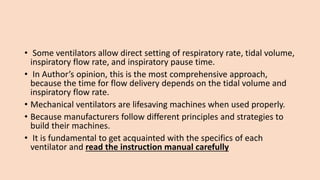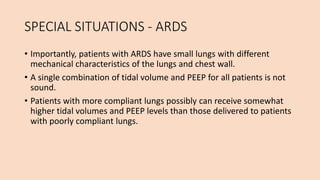Volume control ventilation (ACV) is the most commonly used ventilation mode. It delivers a constant tidal volume with each breath, whether triggered by the ventilator or patient. ACV aims to unload respiratory muscles and improve gas exchange. While it ensures consistent ventilation, ACV also constrains the patient's breathing pattern. Settings like inspiratory flow must be optimized to balance respiratory muscle unloading and patient comfort. ACV is effective for acute respiratory failure but requires adjustments over time as patient needs and lung mechanics change. Future research is needed to better understand patient-ventilator interactions and respiratory muscle function during ACV.














































